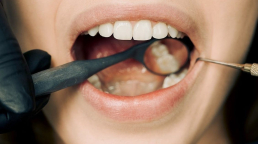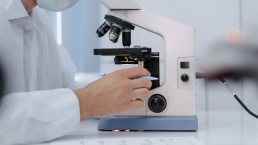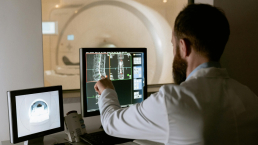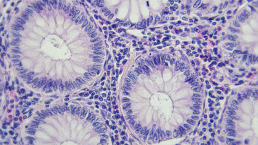
Links Between Oral Microbiome Imbalance and Disease
The human microbiota accounts for 90% of cells in the body. Different bacterial communities around the body have shown to be linked. For example, bacterial communities in the oral cavity, impact bacteria in the gut. Furthermore, oral microbiota can migrate to various areas of the body, known as dysbiosis, initiating an immune response and cellular damage. This can increase the pathogenesis of diseases such as Alzheimer’s, diabetes, and cardiovascular disease and inflammatory bowel disease. This article aims to investigate the science behind the oral microbiome and how certain periodontal bacteria can contribute to disease.
What is the Human Microbiome?
The human microbiome refers to diverse groups of bacteria that inhabit specific niches of the body. This includes the gut, the oral cavity, the skin, and the genitourinary tract. These bacteria have been shown to play a key role in the balance between health and disease.
Because they play such a significant role in human health, the National Institute of Health (NIH) launched a program to conduct further research into their capabilities.
The Common Funds Human Microbiota program
The National Institute of Health (NIH) launched the Common Funds Human Microbiota Program in 2007. This program developed research resources to investigate the microbial communities that live in and on the human body and they explore their roles in human health and disease. Because of the completion of the human microbiota program, awareness of oral microbes has increased.
The program identified that bacterial cells outnumber human cells by 10 to 1 in a healthy human body. This demonstrates how important it is to understand the role of bacterial cells in the body and how to maintain a healthy balance.
What is the Oral Microbiome?
The oral microbiome refers to a community of bacteria, viruses, and fungi that reside in the mouth. Furthermore, the community of bacteria varies depending on the location in the mouth, such as the cheeks, tongue, saliva, teeth, and periodontal pocket.
The oral cavity is one of the most diverse microbiomes in the human body, sustaining hundreds of different species. Some of these bacteria are opportunists, which, when given the opportunity, can cause damage or disease. These opportunities arise when there are imbalances in the commensal, symbiotic, and pathogenic bacteria; this is referred to as dysbiosis.
What is Dysbiosis?
There are three main types of dysbiosis:
- The loss of beneficial bacteria.
- The overgrowth of potentially pathogenic bacteria.
- The loss of overall bacterial diversity.
Dysbiosis can result in the loss of beneficial bacteria, which have specific functions in the body. There are several lifestyle factors or conditions that can affect oral dysbiosis, such as salivary gland impairment, poor oral hygiene, gingival inflammation, dietary habits, and smoking.
Dysbiosis of oral microbes such as Streptococcus mutans, Staphylococcus aureus, Fusobacterium nucleatum, Porphyromonas gingivalis and Candida play a significant role in the development of oral diseases such as dental caries, periodontal disease, and candidiasis. However, these bacteria have also now been linked to other systemic diseases, such as diabetes, obesity, and cardiovascular disease, as well as Alzheimer’s and inflammatory bowel disease.
Research shows that the composition of the oral microbiome originates from mothers, who can transmit microbes to babies during the birth process.
Oral Microbiota Link with Maternal Factors
Maternal factors influence the colonization of the microbiome. Furthermore, research shows that the type of delivery and breastfeeding hugely impact the initial microbiota in babies. They have the power to directly influence the colonization of bacteria at multiple sites.
A recent study published in Pathogens suggests that breastfeeding promotes early-life oral colonization of S. epidermidis in children from healthy mothers. Furthermore, giving birth via Caesarean section procedure appeared to promote a wider diversity of pathogens in comparison to vaginal birth.
The colonization of the microbiome begins at birth. But it’s important to protect this balance, as dysbiosis can lead to the development of various diseases, such as Alzheimer’s.
Oral Microbiome and Alzheimer’s Disease
Alzheimer’s is a progressive neurodegenerative disorder and is the most common type of dementia. The main hallmark of Alzheimer’s is the abnormal buildup of proteins in the brain, which disrupt neurons and brain signalling. This results in symptoms such as memory loss, a decline in cognitive function, and behavioural changes.
Alzheimer’s Disease Pathology
The two main proteins associated with Alzheimer’s disease are amyloid-β (Aβ) peptides and Tau. Amyloid-β (Aβ) peptides stack together and form plaques that disrupt normal brain signalling. Whereas, Tau proteins clump together and form neurofibrillary tangles, which interfere with the neuron transport system, damaging synaptic communication between neurons.
Currently there are limited preventative and treatment options for Alzheimer’s, as the condition is still not fully understood. However, recent studies have linked poor oral health with an increased risk of Alzheimer’s pathologies.
Researcher published in Brain Sciences investigated this. The study concluded that diseases of the oral cavity and tooth loss were associated with a higher risk of developing Alzheimer’s . Furthermore, research shows that oral pathogens such as Treponema spirochetes (i.e., T. pectinovorum and T. socranskii), Porphyromonas gingivalis, Prevotella intermedia, Campylobacter rectus, Fusobacterium nucleatum, Actinomycetales species, and Veillonella species, or their antibodies, increase significantly in individuals with Alzheimer’s. Furthermore, studies have also suggested that T. pallidum, which can be present in oral microbiota as well as being a causative agent for syphilis, can survive and live in the brain. This can result in neuroinflammation, persistent infection, and neurodegeneration.
Oral Microbiome and Diabetes
Type 1 Diabetes mellitus (T1D) is an autoimmune disease caused by the destruction of pancreatic beta cells, which results in poor glycemic control. Diabetes is a known precursor to oral diseases and infections.
A study published in Microorganisms investigates this link between diabetes and oral diseases such as periodontal and dental caries. It’s suggested that the development of these complications is due to changes in glycemic control and saliva composition in patients with type 1 Diabetes. This is thought to negatively affect the balance of oral microbiota. However, the concept is currently controversial. The study confirmed that children and adolescents with T1D have a high prevalence of periodontal pathogens from an early age.
Periodontal pathogens can cause a lot of issues throughout the body. Oral microbiota can travel from the oral cavity to the gut via swallowing, aspiration, and translocation. Here, it can cause gut inflammation, which can cause the development of inflammatory bowel disease.
Oral Microbiome and Irritable Bowel Disease
Inflammatory bowel disease is a term used to describe two conditions: ulcerative colitis and Crohn’s disease. They are classified as chronic idiopathic disorders with relapsing inflammation of the gastrointestinal tract. The symptoms of these conditions often cross over. However, there are defining differences between them.
Ulcerative colitis predominately affects the colon and rectum, whereas Crohn’s disease affects multiple parts of the gastrointestinal tract, including the terminal ileum and the large intestine.
Both bowel diseases have been linked to dysbiosis of oral microbiota in the oral cavity, stimulating inflammation in the gut. Furthermore, studies have also shown that oral microbiota can translocate to the gut, which can also induce inflammation in the gut.
The Common Funds Human Microbiota Program identified that oral and gut microbiota overlapped in half of their subjects.
A review published in Nutrients aimed to further investigate the link between the oral microbiome and inflammatory bowel disease. Furthermore, it identified that the link between oral microbiota and inflammatory bowel disease should be investigated further to develop targeted interventions and treatments to improve gut health and disease outcomes for affected patients.
Periodontal pathogens can also affect other areas of the body, including the heart. In particular, periodontal disease can allow periodontal pathogens to travel through the bloodstream and cause an increase in inflammatory factors that can damage heart tissue.
Oral Microbiome and Cardiovascular Disease
Advancements in technology have detected oral microbiota in heart valves. This presents a new pathogenic risk factor for cardiovascular diseases such as atherosclerosis, coronary disease, and valvular heart disease (VHD). Moreover, both healthy and compromised heart valves are at risk of damage.
However, compromised heart valves are more at risk. For example, following surgical intervention such as the implantation of a pacemaker, the heart valve tissues tend to have increased roughness, which can promote bacterial attachment and growth.
A recent review in Life describes the pathophysiological link between dysbiotic oral microbiota and cardiovascular diseases, particularly VHD. Their main aim was to focus on the microorganisms involved, prevention, and the potential therapeutic applications of oral dysbiosis in VHD management. The study explains that further research is needed to describe the relationship between the oral microbiome and cardiovascular diseases. However, prevention of periodontal disease and oral dysbiosis by maintaining oral hygiene and regulating diet is a good preventative measure.
The future of Oral Microbiota Research
The oral microbiome is a complex environment of both beneficial and potentially pathogenic bacteria. Dysbiosis is a dangerous threat to the body and can result in the pathogenesis of various diseases and conditions. It allows ordinary, stable pathogenic bacteria to cause cellular damage and inflammation at multiple sites in the body. However, good oral hygiene and a healthy diet can help to maintain a balanced oral microbiome and prevent the risk of oral diseases and further complications.
Further research is crucial in this area to investigate the oral microbiome’s role in certain diseases and to develop targeted interventions and treatments.
If you’re interested in reading or submitting research in the oral microbiome field, please see Applied Sciences and the International Journal of Molecular Sciences, which both have Special Issue deadlines coming up on the subject!










